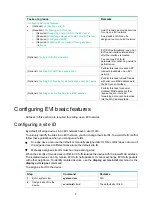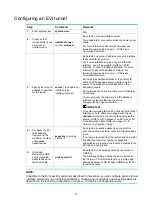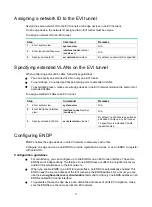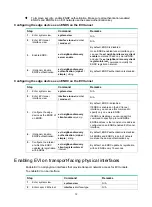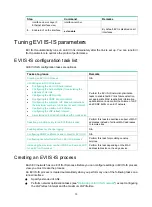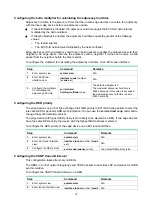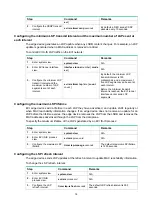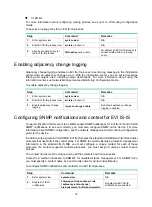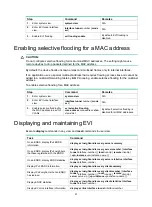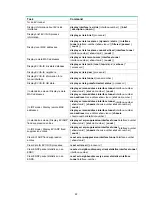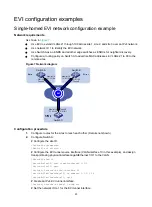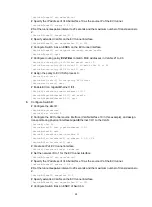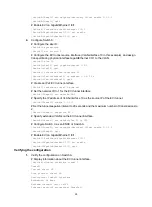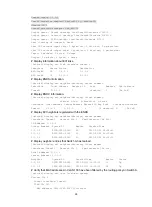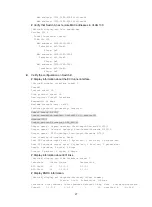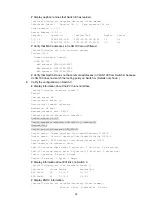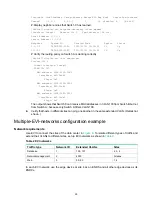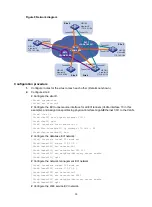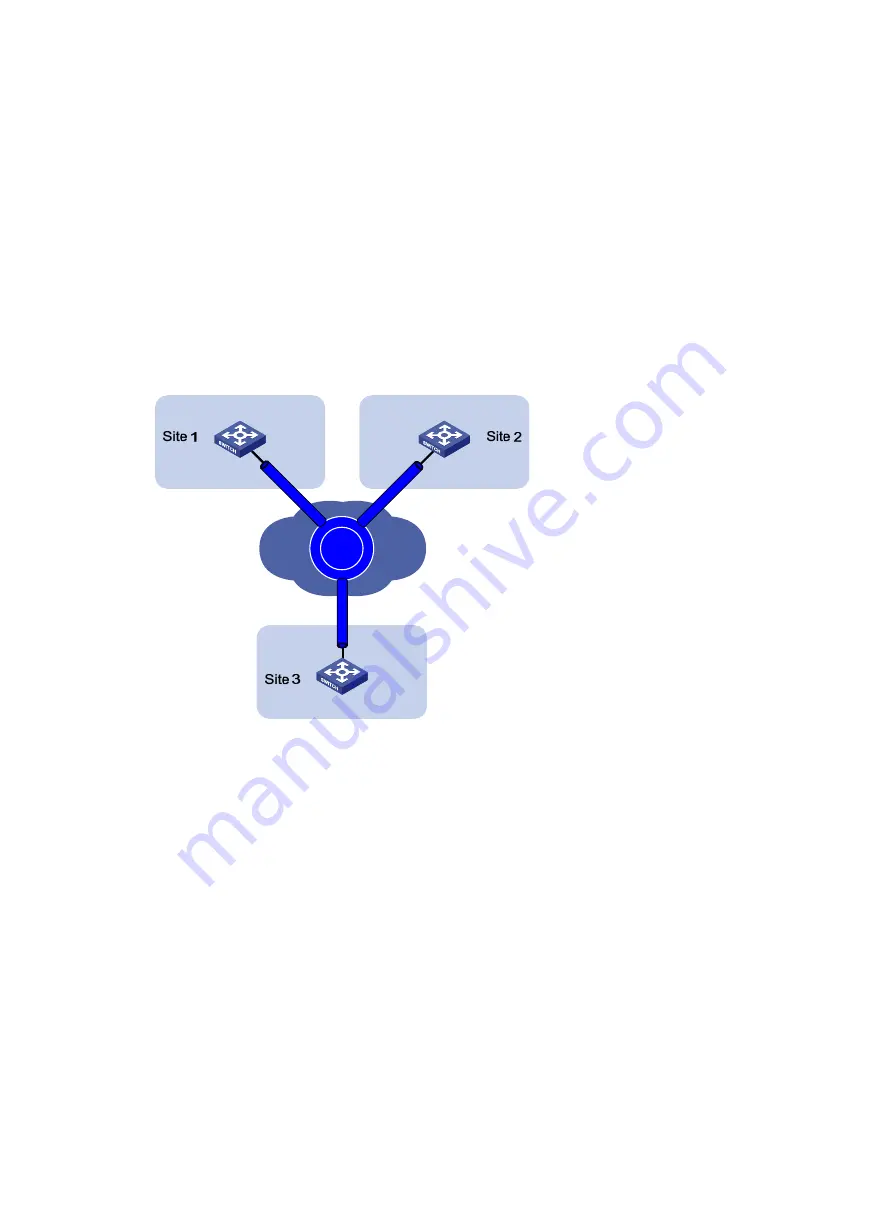
23
EVI configuration examples
Single-homed EVI network configuration example
Network requirements
As shown in
.
•
Use EVI to extend VLANs 21 through 100 across site 1, site 2, and site 3 over an IPv4 network.
•
Use network ID 1 to identify the EVI network.
•
Use Switch A as an ENDS and all other edge switches as ENDCs for neighbor discovery.
•
Configure a routing policy on Switch A to advertise MAC addresses in VLANs 21 to 90 to the
remote sites.
Figure 7 Network diagram
Configuration procedure
1.
Configure routes for the sites to reach each other. (Details not shown.)
2.
Configure Switch A:
# Configure the site ID.
<SwitchA> system-view
[SwitchA] evi site-id 1
# Configure the EVI tunnel source interface (VLAN-interface 10 in this example), and assign
transport-facing physical interface GigabitEthernet 1/0/1 to the VLAN.
[SwitchA] vlan 10
[SwitchA-vlan10] port gigabitethernet 1/0/1
[SwitchA-vlan10] quit
[SwitchA] interface vlan-interface 10
[SwitchA-Vlan-interface10] ip address 1.1.1.1 24
[SwitchA-Vlan-interface10] quit
# Create an IPv4 EVI tunnel interface.
[SwitchA] interface tunnel 1 mode evi
# Set the network ID to 1 for the EVI tunnel interface.
IP network
Vlan-int10
1.1.1.1/24
Tunnel1
Switch A
Switch B
Tunnel1
Vlan-int10
1.1.2.1/24
Switch C
Vlan-int10
1.1.3.1/24
Tunnel1
GE1/0/1
GE1/0/1
GE1/0/1
EVI

